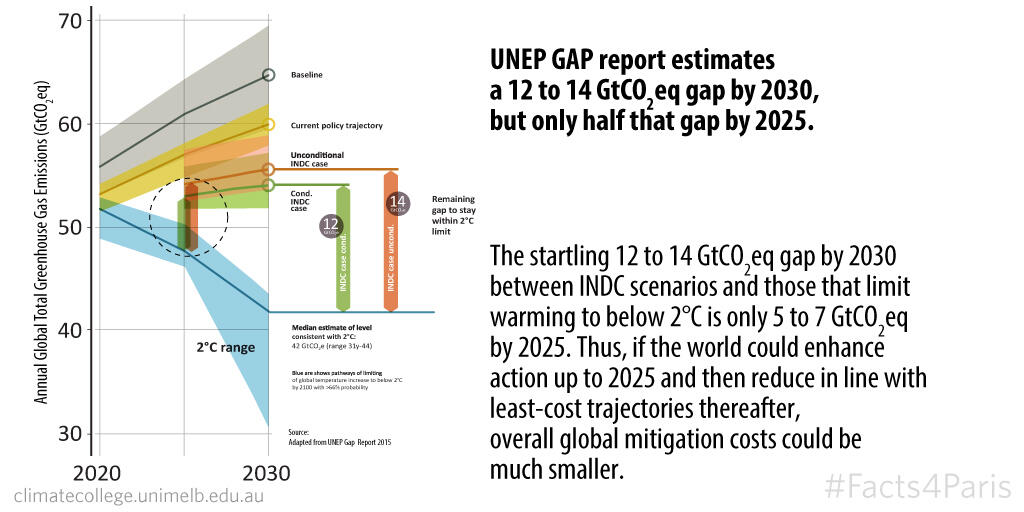Facts4Paris: UNEP GAP report estimates 12-14 GtCO2e gap by 2030, but only half as much by 2025.

The 2015 UNEP gap report was released on Friday just one week after the UNFCCC Synthesis Report on the aggregate effect of the INDCs was published. The numbers in the UNEP report basically confirm those of the UNFCCC Synthesis Report.
The message is the same: the gap between where the INDCs will take us by 2030 and where the world needs to be for a least-cost trajectory towards 2°C is vast: an enormous 12 to 14 Gt.
However, if we look only to 2025, the gap seems much more manageable: an approximate 5 to 7 GtCO2eq.
This suggests that in Paris we should focussing on 2025, where we can still make a difference. If we can negotiate down this gap for 2025 and treat the 2025 level as an absolute global cap, then subsequent negotiating rounds can look to enhance ambition toward 2030 with emissions peaking and starting their downward trajectory.
Note: The UNEP gap report calculates the gap as the difference between calculated INDC emission levels by 2030 and the IPCC AR5 scenario database scenarios that start global mitigation by 2020 and have a 66% likelihood of staying below 2°C by 2100. The UNFCCC Synthesis Report shows scenario trajectories and calculates the gap towards scenarios that have at least a 66% chance of staying below 2°C over the course of the 21st century, but start global mitigation in both 2010, today and 2020.
...Oh, and yes, our INDC Factsheets are one of the global studies assessed in the UNEP GAP report.
